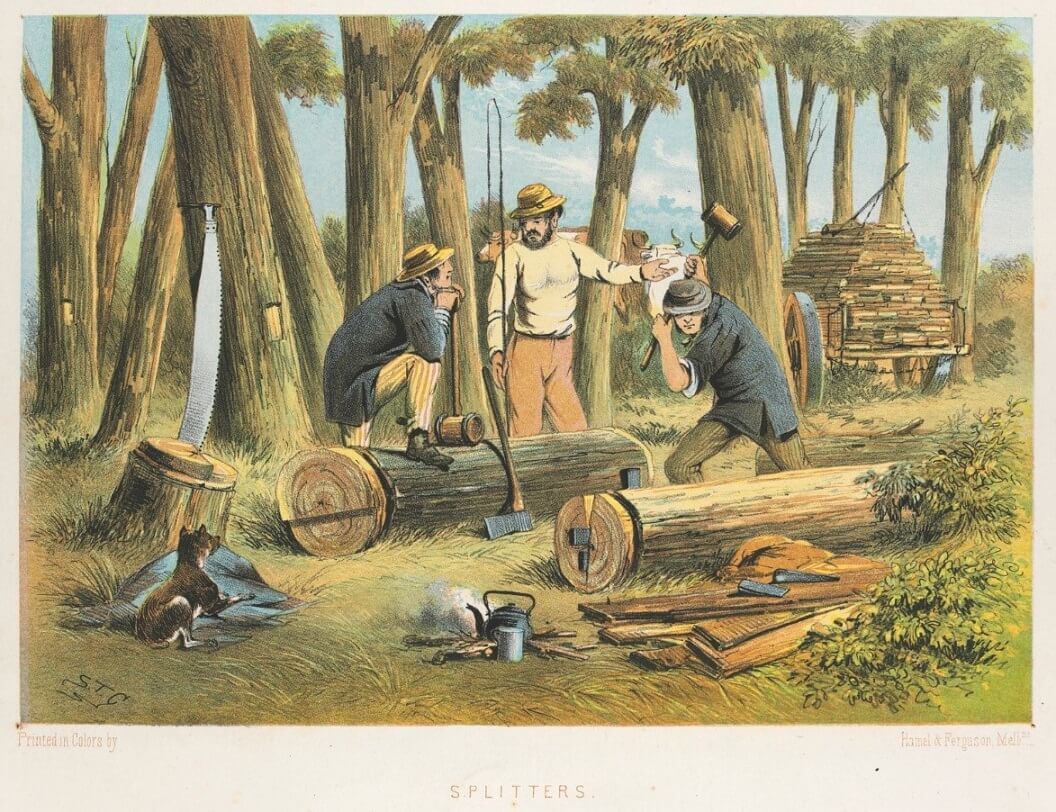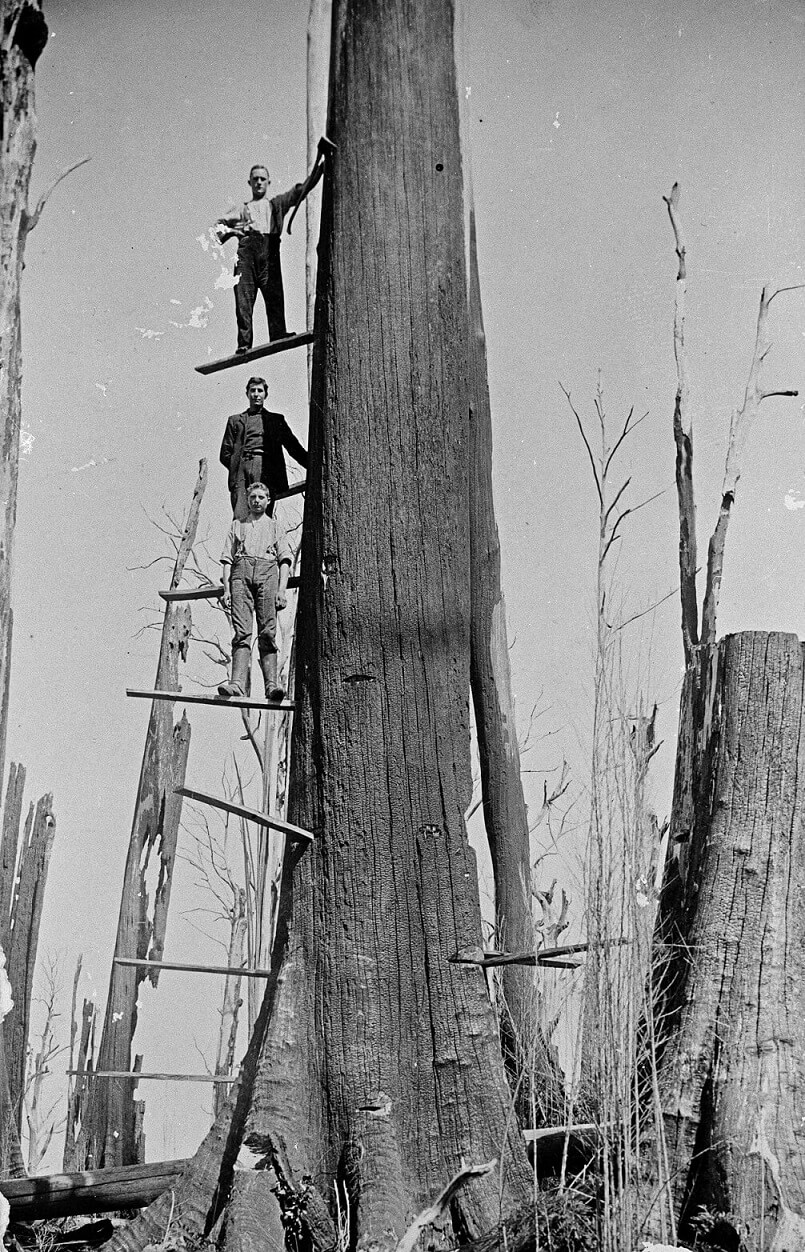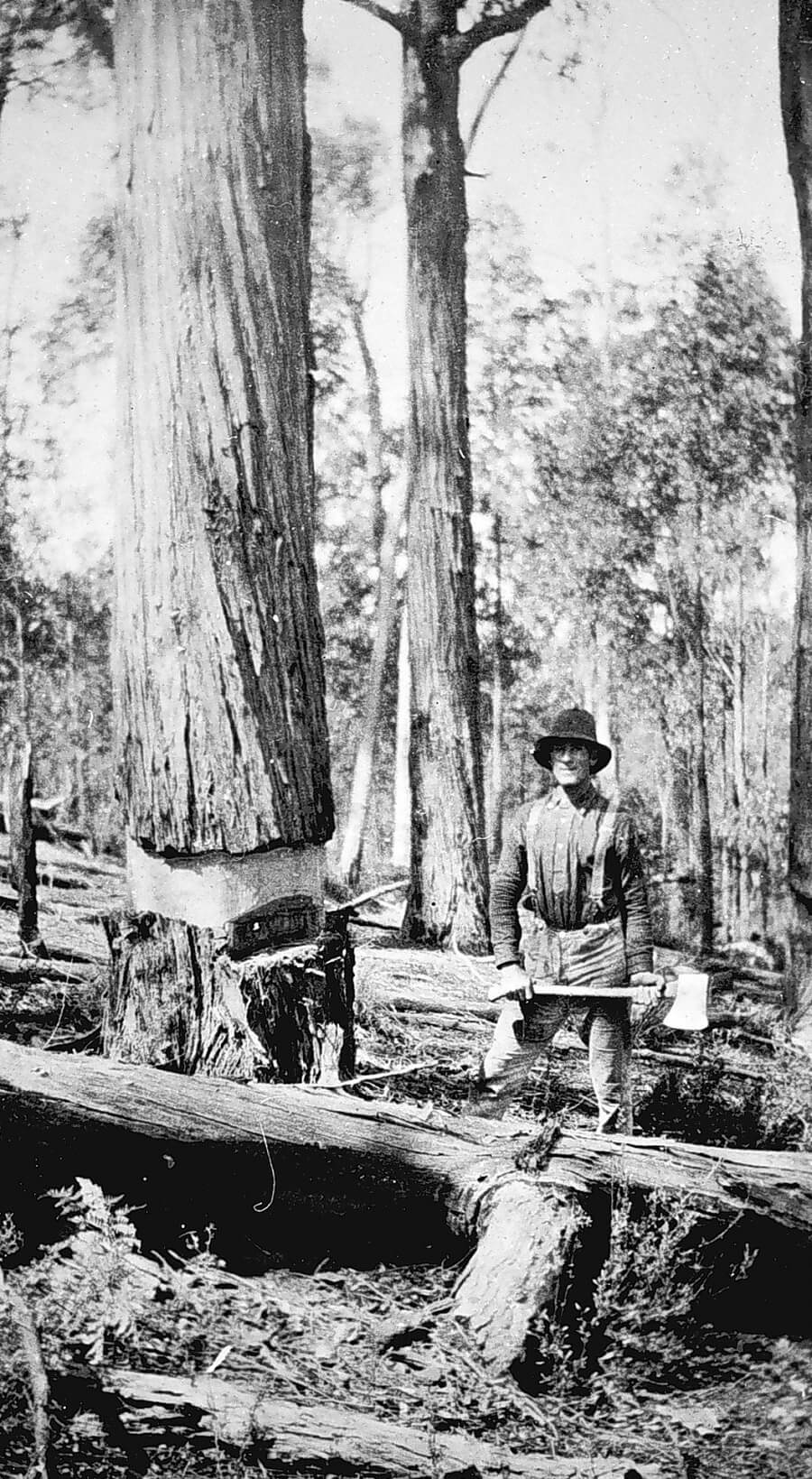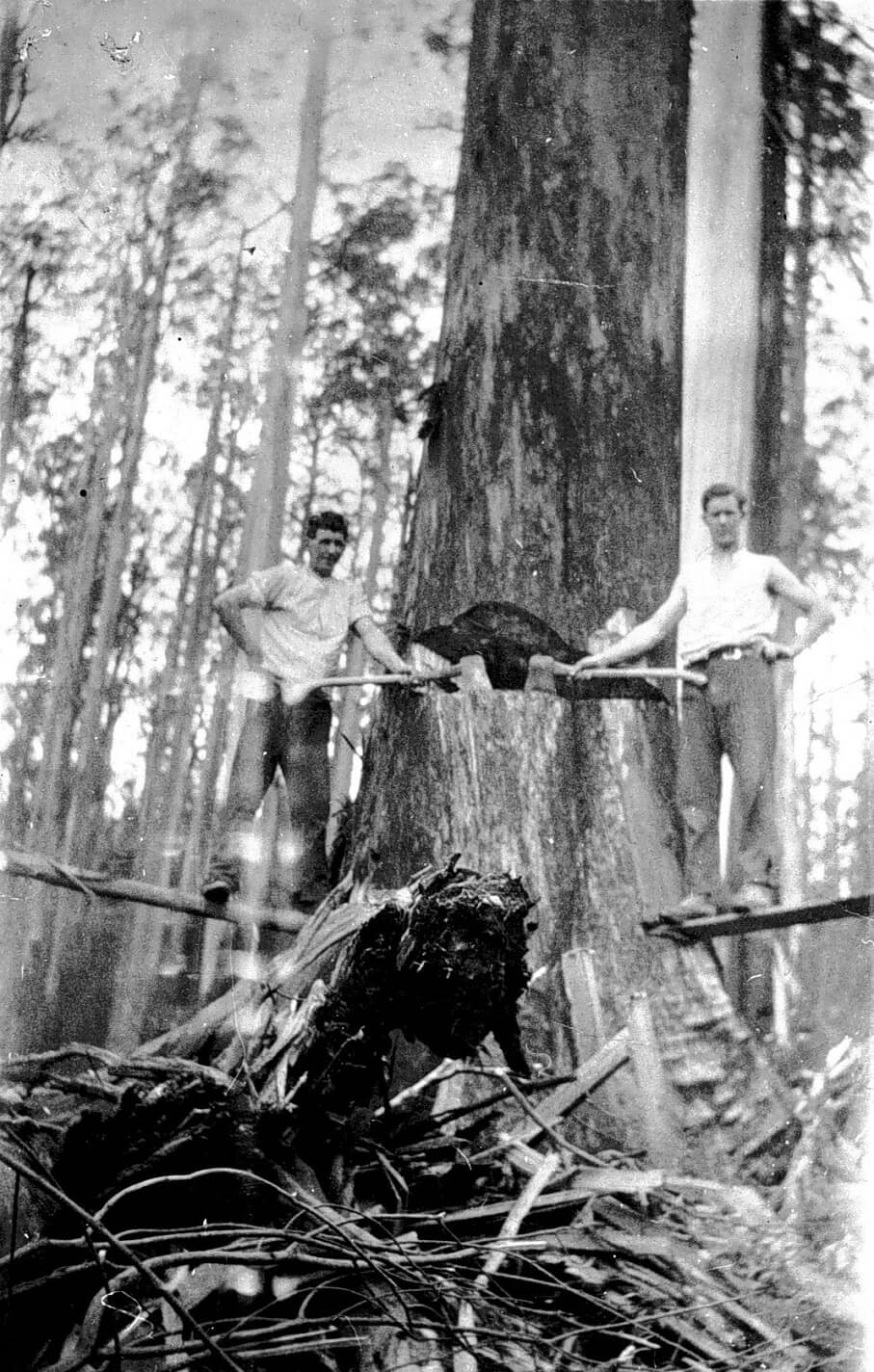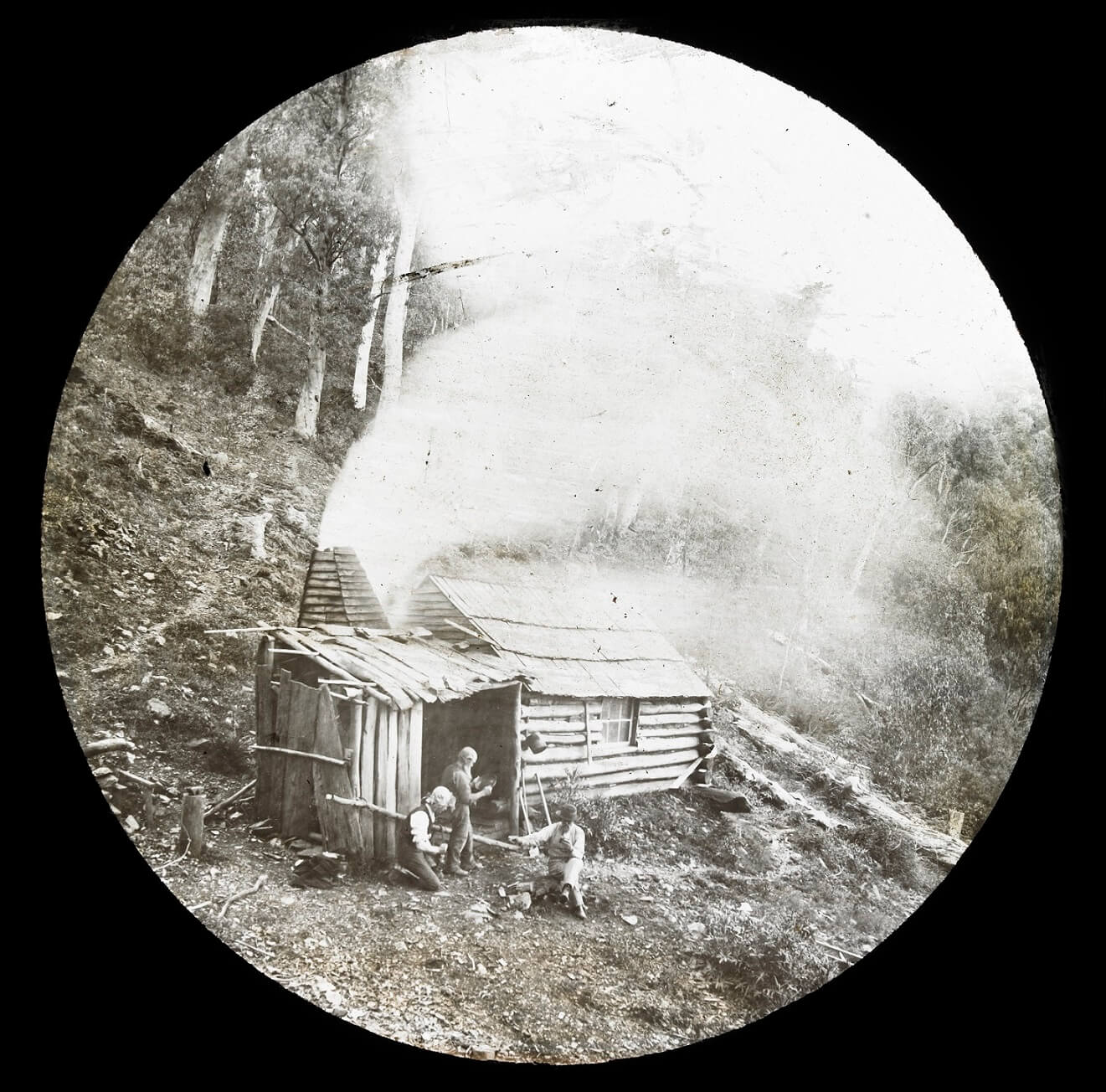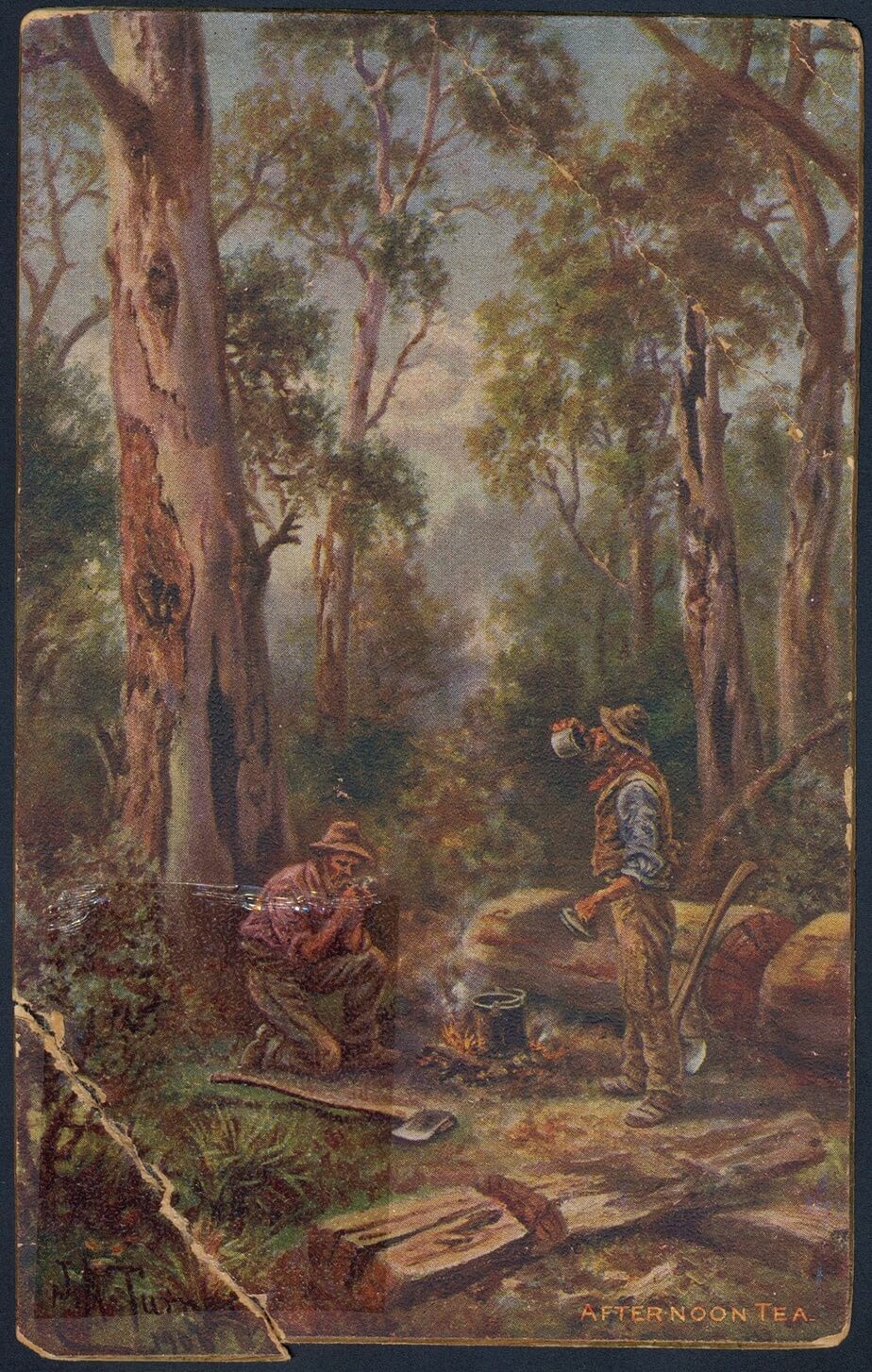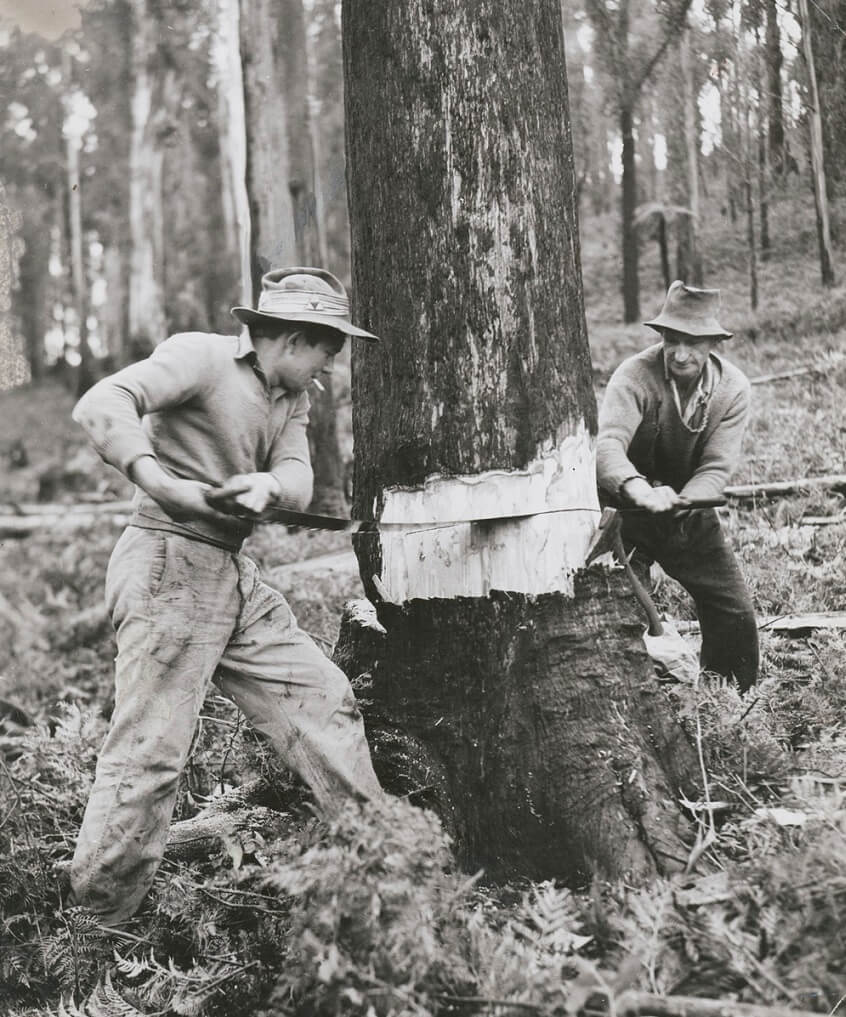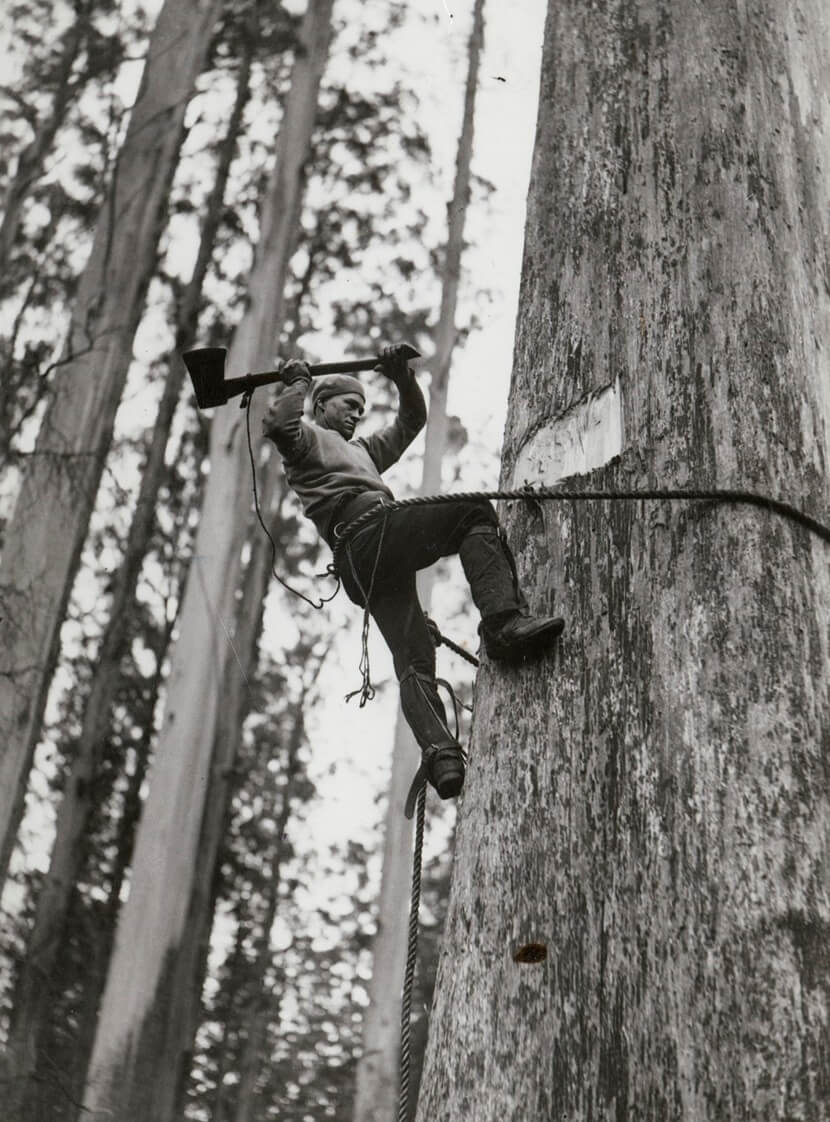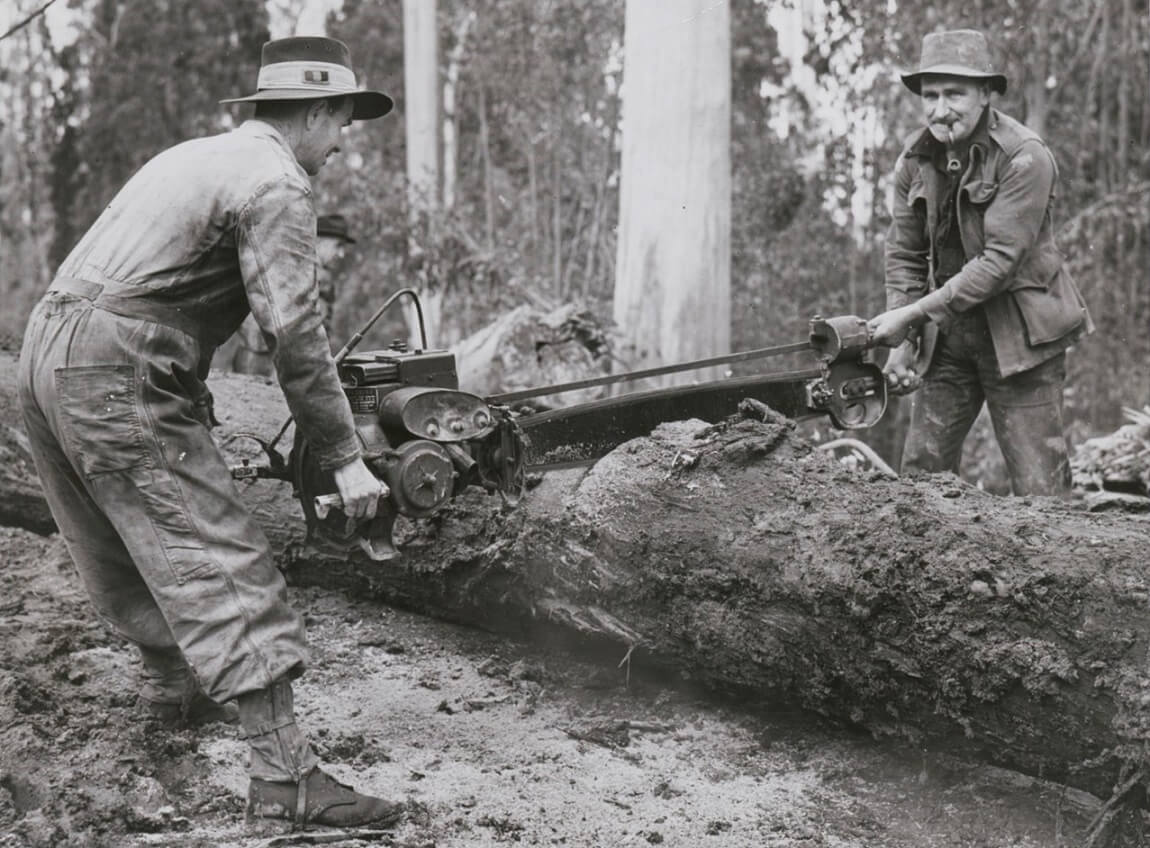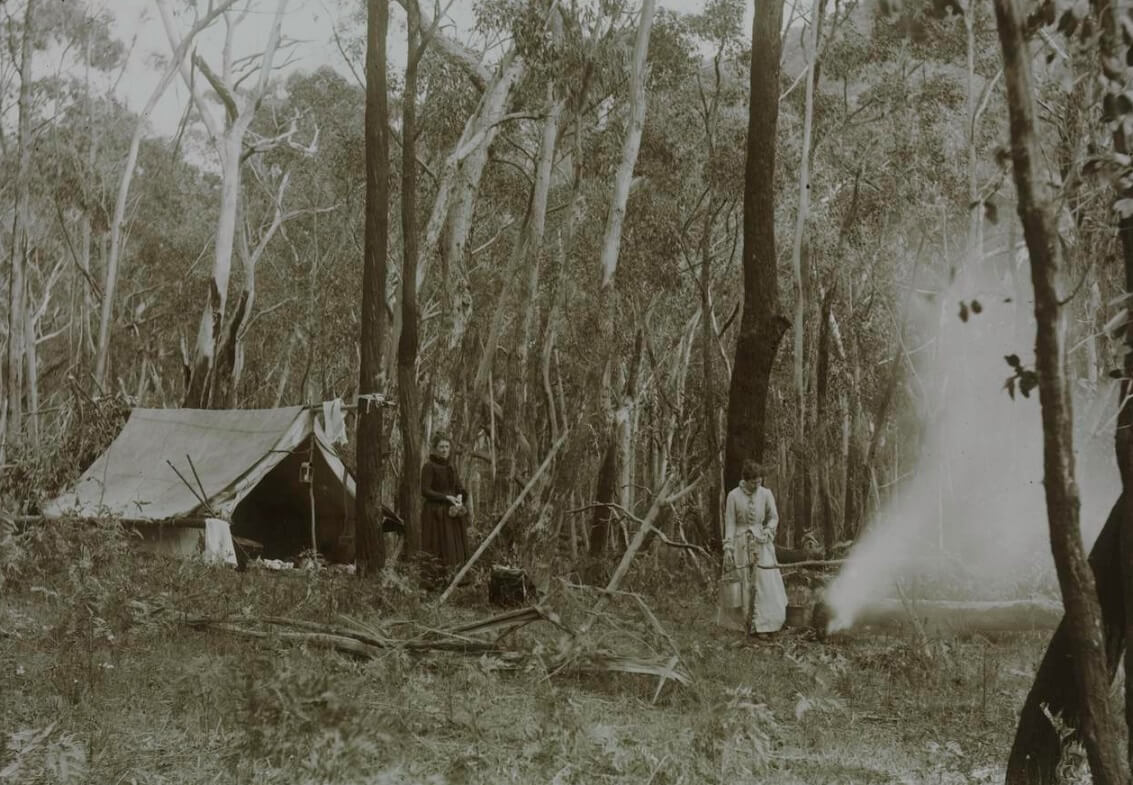One of the first acts of colonisation was tree felling. Wood had many uses in the nineteenth century. It was essential for warmth, cooking, building (houses, the first bridges and so on), fencing and roofing (wooden shingles). During the gold rush the demand for timber was said to be ‘insatiable’. Timber lined shafts and drives and was consumed voraciously by steam engines. By the end of the 1860s Ballarat alone was said to consume nearly 180,000 tons of firewood, 850,000 props, 3,000,000 lathes and 7.5 million super feet of sawn timber each year! (One super foot equalled 144 cubic inches.) In the late-1880s Melbourne households burned between 350,000 and 450,000 tons of firewood each year, much of it brought into the city by rail from distant forests. The railways themselves added a huge demand for timber for railway sleepers. One by one, Victoria’s mighty forests fell to the axe. By 1900 the Warrenheip, Bungaree, Dean and Wombat forests were all classed officially as ‘ruined forest’, but the demand for timber continued. Timber getters moved on to the Otways and the forests near Warburton. Much of the felling was very wasteful. In the 1870s it was estimated that only about one-eighth of the felled timber was actually used: the rest was left on the forest floor where it became a serious bushfire hazard during the summer months.
Splitters, coloured lithograph by S T Gill, 1864
Reproduced courtesy State Library Victoria
Gill drew three splitters using axes, mallets and wedges to split logs into rough planks. In the background is a bullock wagon loaded with planks. A kettle boils on an open fire in the foreground and they have a dog for company, or perhaps to guard the camp at night. Most timber work involved hard labour and splitting logs was no exception.
Thousands of men earned a living with an axe and there were many different timber-getting jobs. They included axe men and timber cutters (both probably the same as timber getters), loggers, splitters, sleeper cutters, shingle cutters, sawyers and others. They lived and worked in primitive conditions in the forests, with almost nothing in the way of safety equipment. It was undoubtedly a dangerous occupation. Many were killed or injured by trees or branches falling on them, or by falling from trees. Summer bushfires were a particular hazard in an age before telecommunications.
Men felling Tree, Lavers Hill district, c. 1910
Reproduced courtesy Museums Victoria
Photographs like this one show the techniques used to climb tall trees for felling in stages, but at the same time, almost seem to celebrate the dangers of the job.
An axeman beside a ring-barked tree, c. 1920. Ensay district
Reproduced courtesy Museums Victoria
Loggers, Gippsland, c. 1925
Reproduced courtesy Museums Victoria
The loggers are standing on planks inserted into the tree trunk and have commenced their cut.
Victorian Alps, loggers’ hut, c. 1890-1930
Reproduced courtesy State Library Victoria
This slide shows three men outside a rough, bush hut on a hillside. The lean-to is probably a makeshift kitchen, with a wooden chimney, always a fire danger. Axes and other tools lean against the wall of the house.
Afternoon Tea, postcard, 1907. Original artist J A Turner.
Reproduced courtesy State Library Victoria
Loggers at rest for a cup of tea, their axes and other tools laid down for the moment. One is drinking from a tin cup, while the other lights his pipe. They have a billy boiling on a campfire.
Clearing at Snob’s Creek, High Country Victoria, c. 1946
Reproduced courtesy State Library Victoria
Logging techniques changed little over the years. These men are using a cross-cut saw to fell a tree in Victoria’s High Country in 1946. Although scientists were beginning to understand the importance of trees to the overall preservation of the environment, land clearing was still in full swing in this period. Soil erosion and increased salinity were two of the more serious outcomes.
Timber cutting, Powelltown Victoria, c. 1946
Reproduced courtesy State Library Victoria
This man is using an axe to chop through the trunk of a tree at some distance from the ground. He is held in place by a rope around his waist, while his boots rest on metal spikes. The axe is secured by a second rope tied to his belt.
Timber cutting, Victoria, c. 1948
Reproduced courtesy State Library Victoria
Machinery began to transform the work of timber cutting in the post-war period. Here two men are cutting a log using an American petrol motor saw. Chain saws that could be used by one person were developed after the Second World War.
Environment movement
Although land clearing remained government policy for most of the twentieth century, a growing environment movement protested at the destruction of the forests and the long-term damage this caused. A J Campbell was an early naturalist who tried, in vain, to convince government to preserve the forests. He was also one of the first to use photography to document the destruction of the environment.
Pioneer women at land clearing, the Dandenongs, 1904-7
Lantern slide, A J Campbell photographer
Reproduced courtesy Museums Victoria
A J Campbell was a committed campaigner, who used illustrated lectures to spread the word. In 1893 he presented a lecture at the Working Men’s College in Melbourne, describing his lecture as a ‘pictorial protest against the government…who were about to despoil a magnificent State Forest Resource’. Museums Victoria holds a collection of many of Campbell’s lantern slides.

